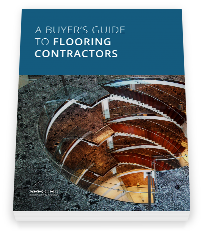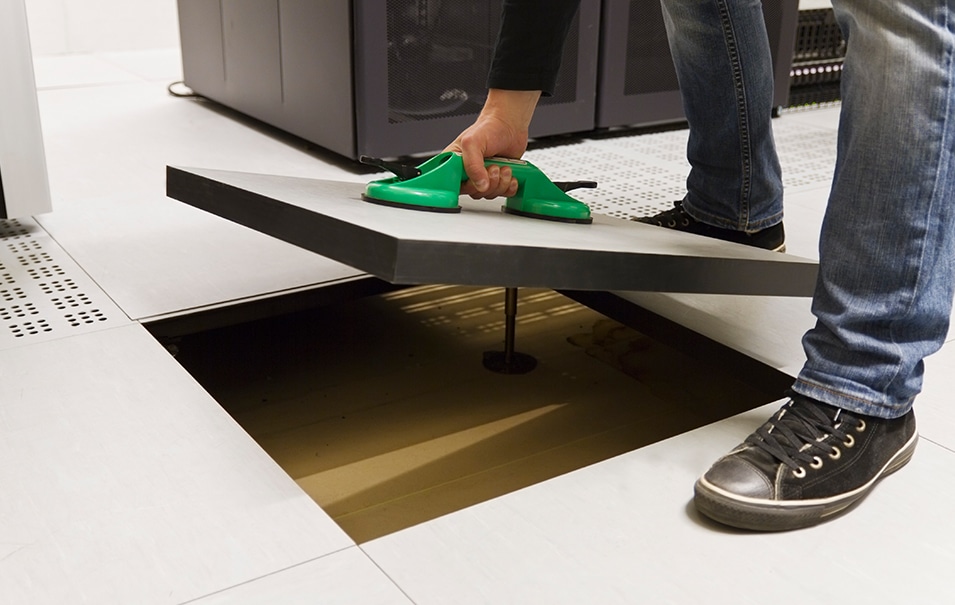Raised floor systems explained
Raised floor systems, also known as access floors, are an elevated structural floor that is stabilized over a solid substrate, typically a concrete slab. A raised floor system creates a gap ideal for running electrical wiring and HVAC ducts.
The structural floor is composed of panels on a grid supported by adjustable vertical pedestals. The pedestals are affixed to the subfloor through either mechanical fixings or adhesives. Since the pedestals are adjustable, the gap between the elevated floor and the subfloor can be between 3 and 48 inches.
Panels are typically 2 feet by 2 feet and are normally composed of a cement or wood core clad in steel or aluminum. The panels are compatible with many flooring finishes such as: vinyl, linoleum, laminate, rubber, carpet and stone or ceramic tiles.
Implementing value engineering and life cycle cost analysis will help find a balance between aesthetics, cost, durability and maintenance along with the purpose of the raised floor to determine what finishing materials are best-value options for the project.
Benefits of a raised floor
The most common usage for access floors is to run cables, electrical wiring and HVAC ducts. Running cables and electrical wiring through the accessible space between the panels and the subfloor allows easy access and flexibility; wiring can be rerouted, repaired and upgraded without construction and minimal interference to the business’ everyday activity. When combined with modular electrical systems and modular walls, the entire building can be reconfigured in a fraction of the time it would traditionally take.
Heating and cooling a building with a raised flooring system is also more efficient. The empty space between the panels and the subfloor acts as a plenum chamber to dispense conditioned air evenly throughout the building. Additionally, since warm air rises, heating the building from the access floor gap during the winter is more effective and efficient.
Raised floors are particularly useful for data centers and telecommunication facilities. Computer systems can rest on perforated tiles so that conditioned air is accessible for each unit. The equipment can then be designed to draw the cool air from below.
With the increased efficiency and accessibility, access floors are an ideal alternative to suspended ceilings, pre-cast trunking and dado trunking.
Questions to ask when planning for a raised floor system
There are a few things to be considered when planning a raised floor system in a construction project. These considerations will help ensure a smooth, safe and timely installation along with confirmation of the necessary structural integrity based on projected use.
- What conditions does the subfloor need to meet? e.g. sealed, wet or dry contamination, structural integrity, level of tamp finish, moisture and alkalinity levels
- What are the local conditions required to ground the access floor?
- How will the raised floor interact with the door thresholds?
- What safety guidelines are required for access floors? e.g. fire suppression systems
- What are the load-bearing requirements? e.g. stationary loads, rolling loads, pedestrian traffic
A raised flooring system can be a beneficial element to any building. The flexibility and efficiency it provides is ideal for a variety of potential occupants. Additionally, occupants don’t have to feel constricted by certain aesthetic designs as there are many finishing options for access floors. Examining and answering a few considerations along with bringing any questions or concerns to your flooring contractor will ease the effort and simplify the planning process.
If you have any questions about raised floor systems or an upcoming commercial flooring project, contact us here or call any of our locations nationwide. Additionally, download our guide on value engineering and learn how to save money on your next commercial floor project.

A buyer’s guide to commercial flooring
How to get the greatest-value floor and select the right contractor for your project.

